The Blue Bloom of Louka: Agnes Kasparkova’s Artistic Legacy in Moravia
In the folk-architectural village of Louka in the colorful heart of Moravia, a sprightly 90 year old woman, formerly an agricultural worker, Agnes Kasparkova and she has become rather a legend. It remains incredible how one can transform from laboring in the fields to mastering brushes in what is sometimes referred to as the golden age. Her unique pastime? Hanging prosaic and with Moravian motifs of vernacular ornaments in her village houses. Every stroke of her brush not only brings back the depth of blues, characteristic to Moravian art, but also recalls the essence of the town of Louka. Indeed, with her uncontested love for painting, Agnes has not only decorated her environment by rendering artistic services, but has equally, and perhaps more importantly, imparted and nurtured a culture of tireless dedication within her community. Accordingly, her work became a living resurrection of the Moravian culture and art.
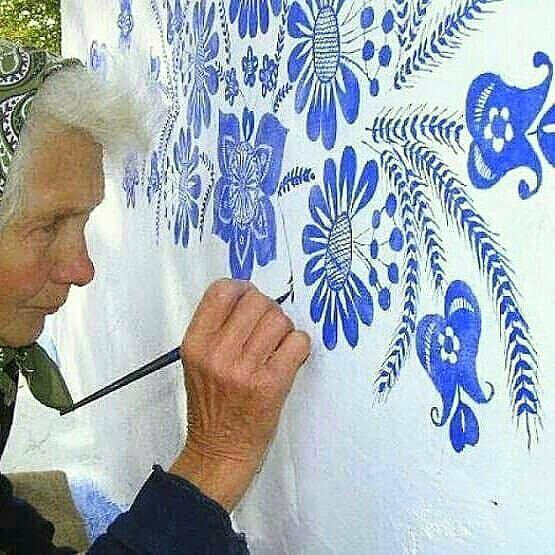
1. Background of Tapestry of Louka
1.1. The Historical Tapestry of Louka
Louka is a small village in Southern Moravia. Simply, it boasts a rich history that is as colorful as the murals that now adorn its buildings. Known for its pastoral landscapes and traditional vineyards, Louka holds a significant place in Moravia’s cultural heritage. This region has a rich and long history of civilization. Therefore, it has always been a melting pot, where all the cultures that set foot here. Moreover, it has impacted the existing culture and also contributed to the art that was practiced here.
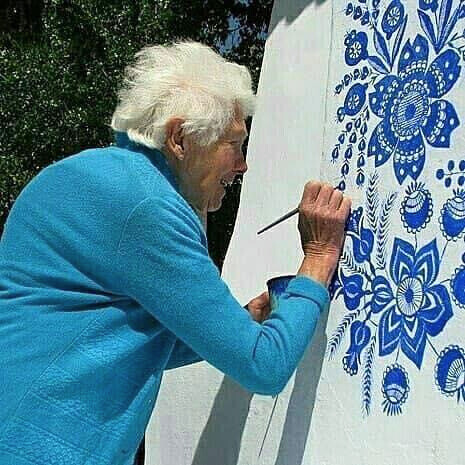
1.2. Moravian Mural Painting: A Cultural Reflection
In Moravia, mural painting represents not merely an art but a message demonstrating historical continuity and aesthetics. These and other traditional motifs express folklore stories, religious saints, and geographical representations of terrains too. They are making contemporary artworks an extension of the historical story. This kind of art has developed over time. It also depicts the Moravian people and their traditions with lively colors and ornamented patterns.
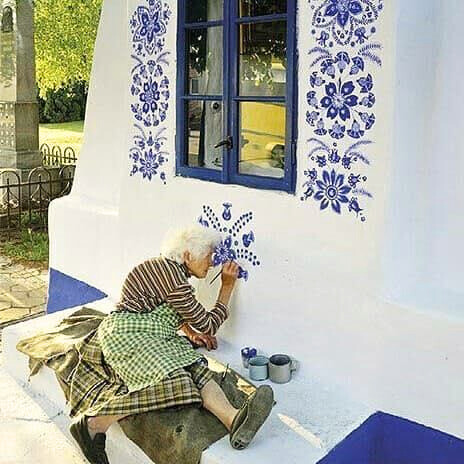
1.3. Agnes Kasparkova: From Fields to Facades
Agnes Kasparkova’s journey into the world of art began in the fields of Louka. After cultivating the soil actively as an agricultural worker and devoting several years of her life in the process, Agnes violently shifted the kind of nurturing she did to ‘nurturing’ beauty now through paintings of murals, corpus of a Farmer to that of an Artist 116 As a farmer, Agnes worked the land for years before she painted the walls for her community. Inspired by previous generations and driven by a personal passion for creativity, Agnes picked up her paintbrush as a retiree. This also proves that it’s never too late to embrace a new calling. Her work beautifies the village as well as preserves a piece of Moravian cultural identity for future generations to cherish.
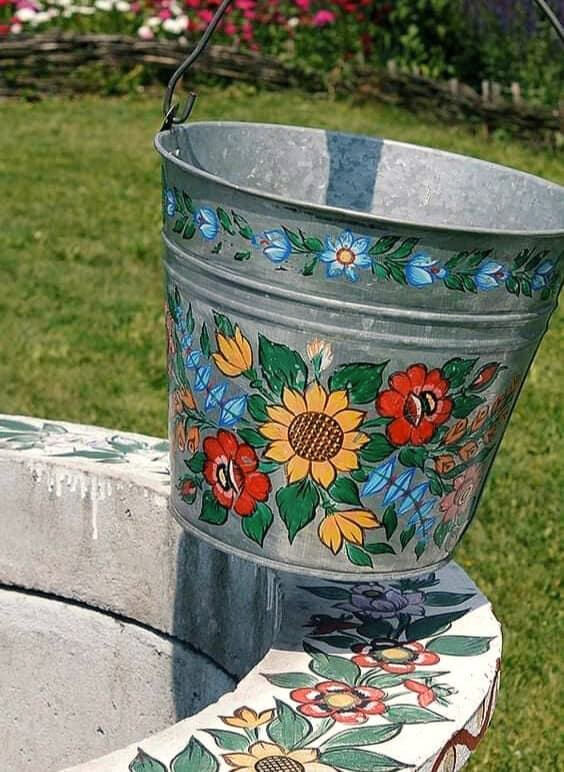
2. The Art of Agnes Kasparkova
2.1. A Canvas of Cobalt: Kasparkova’s Artistic Style
Agnes Kasparkova is renowned for her signature use of bright blue-ultramarine. Simply, it is a color that captures the essence of traditional Moravian motifs with stunning vibrancy. Her style is rooted in the folklore and traditions of Moravia, where floral designs symbolize growth and renewal. Every mural she adorns depicts blossoming flowers, detailed foliage and geometric patterns intertwining with each other creating symmetrical movements of the flow known to cultural motifs that cover walls of the village’s houses, uniformly painted in white.

2.2. Techniques and Tools of a Traditional Artisan
Kasparkova employs simple as well as effective tools and techniques that have been passed down through generations. Using small, hand-held brushes and locally sourced paints, she meticulously applies each stroke with precision and care. “The paint must be just the right consistency,” Agnes has been known to say. “Too thick and it won’t spread smoothly; too thin and it won’t cover properly.” This attention to detail ensures that each design is both beautiful and enduring. Locals often speak of her dedication like “She works with the patience of a saint,” one neighbor remarks. It is generally by highlighting her commitment to the craft.
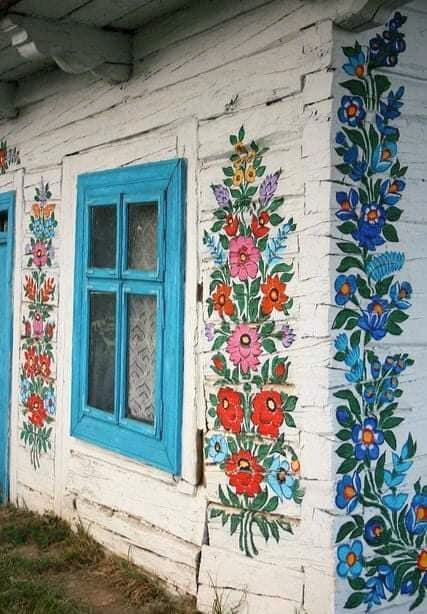
2.3. Celebrating Community: The Village Chapel and Beyond
It is one of the precious flaps of the art collection of Kasparkova. This is where Louka’s most prized ultramodern art piece is painted in the village chapel walls. She also spends hours every year interposing new components of the chapel or redesigning parts of it so that the chapel stays fresh and stands out as the center of the village. There are signs of hope and faith in the pleasant colors of blue and white. So, she has painted her murals to look like a starry sky, and the chapel is divine. Other than the chapel, her art can also be seen from the other structures within Louka including houses, schools, and other erected structures thereby making the whole village an open architectural art gallery of the Moravian art which is immensely admired and appreciated by the inhabitants of the village.
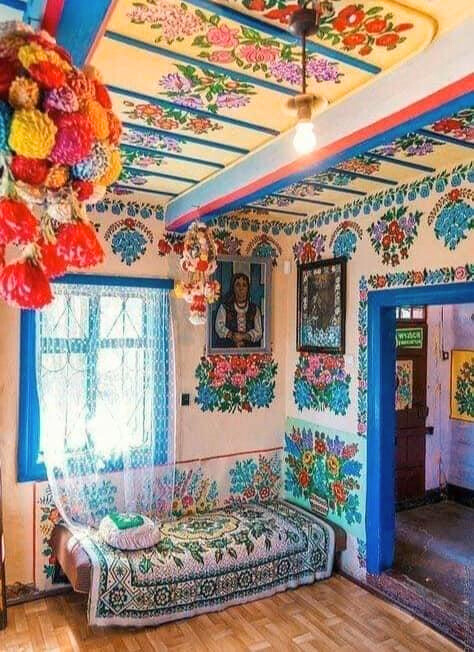
3. Cultural and Community Impact
3.1. Strengthening Community Identity and Pride
Agnes Kasparkova’s vibrant murals have become a cornerstone of Louka’s identity. This is simply weaving her artistic flair into the very fabric of the village. The artistic work done by her has made everyone have the feeling of culture and beauty of the area through the revival of the traditional culture. People see these murals not only as elements of aesthetics and design, but as public statements of history and identity that are recognized and acknowledged within their communities. The feelings of pride are vivid, as people of the community would trek to see her newest piece, and they would engage in topics about the symbolism of motifs that are reminiscent of the Moravians’ heritage.
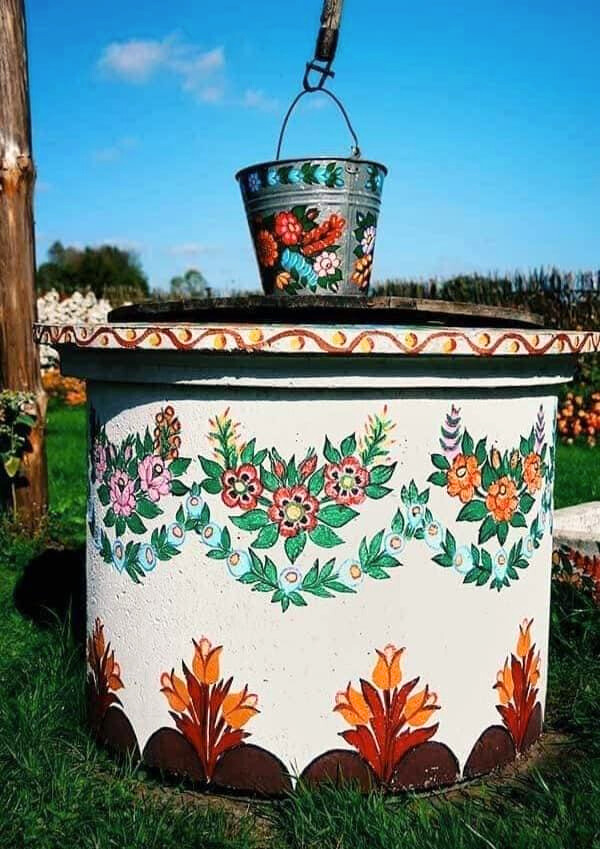
3.2. Drawing Eyes from Afar
Despite the locality, Kasparkova’s art has not remained a secret. Here, many people have been attracted to her uniqueness and exotic work from within the country as well as from other parts of the world. Some of her works are photographs that are frequently shared on social media. Several traveling bloggers have included Louka as a place that tourists need to visit if they want to see folk art. Her ability to attract visitors has brought unexpected attention to this small village, highlighting how local culture can resonate on a global scale.
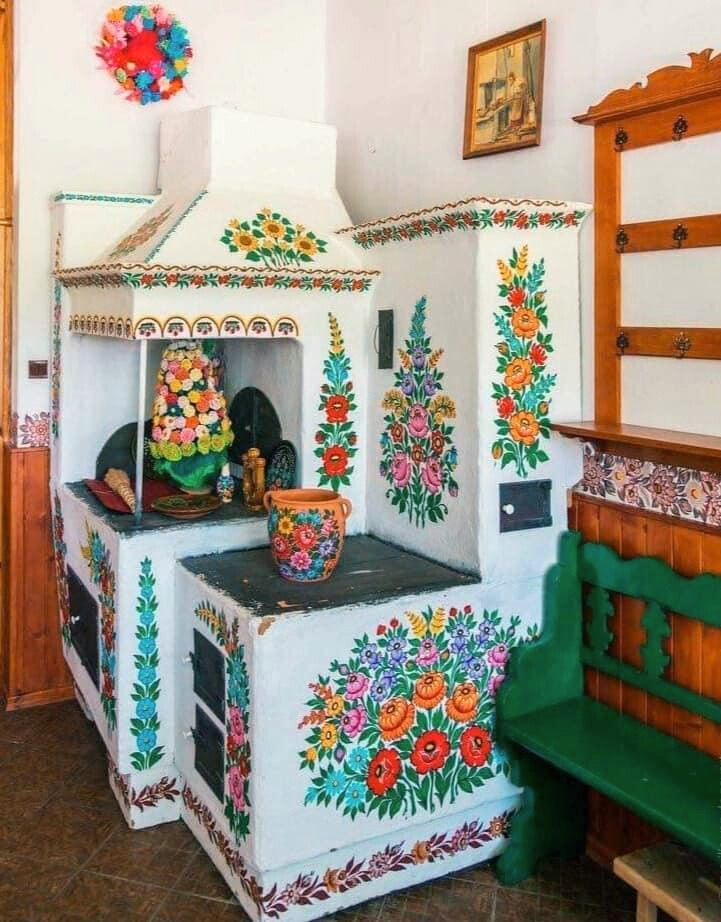
3.3. Inspiring Local Celebrations and Traditions
Kasparkova’s influence is also evident in the local festivities. Inspired by her motifs, Louka has initiated an annual arts festival. Here, residents and visitors alike can engage in mural painting and other traditional crafts too. This event not only celebrates Kasparkova’s contributions but also encourages younger generations to learn about and preserve their cultural heritage. Her murals serve as a backdrop to many community gatherings and have become synonymous with local celebrations, embedding her art deeper into the cultural traditions of the village.
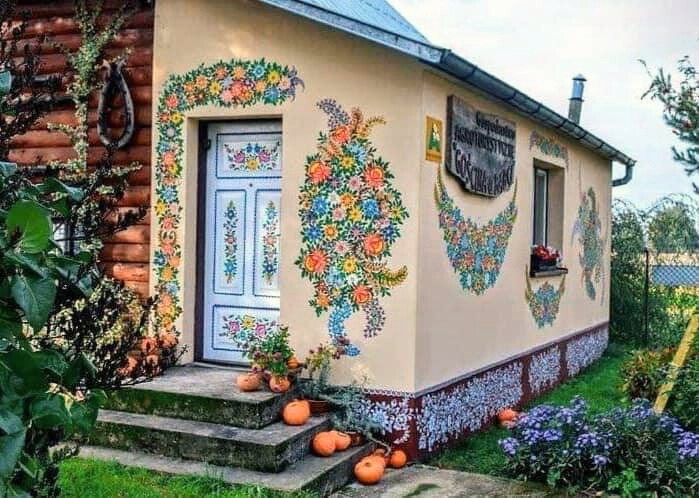
4. Challenges and Triumphs
4.1. Overcoming Obstacles
However, the artist’s inspiration and talent do not mean she escapes various obstacles in creating her art pieces. As a nonagenarian, the physical demands of mural painting pose the most evident hurdle. Here, climbing scaffolds and maintaining a steady hand for hours can be taxing. Furthermore, the climate of Moravia is generally cold and experiences specific rainy periods during the year. Sp, it obstructs her from painting as it is important for the paint to be set in optimum, stable and non-humid weather conditions. But when it comes to these and other difficulties that women face all over the world, Agnes rises and stands up to all the challenges that surround her.

4.2. A Community United by Art
Agnes’s determination is matched by the robust support she receives from the Louka community. Younger residents often volunteer to prepare surfaces or assist her in accessing hard-to-reach spots. Local businesses contribute by supplying paints and brushes. It is simply by ensuring she has the materials needed without burden. But this communal practice ensures that Agnes goes on with the dance she loves, and at the same time, fortifies the unity among the agrarian folks who also get to engage in the task of preserving the communal heritage. In celebration of this symbiosis, Agnes has once said, ‘It is not my art, it is our icons.’ This reflects the profound intimacy between Agnes and her people of Louka.
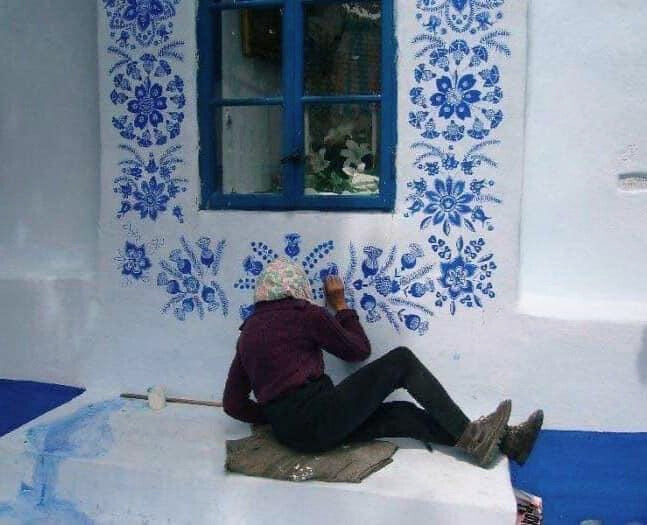
5. Legacy and Future
5.1. A Lasting Influence
Agnes Kasparkova’s murals stand as a vibrant testament to the rich cultural tapestry of Louka. It is also ensuring her legacy will resonate for generations. The beauty of Moravian traditions portrayed by her, has not only earned the village a face lift but also an increased sense of pride and belongingness. When those pictorial representations are made old by time, they will remain as a record indicating that the village has been brought to life by a selfless woman who used her brush to depict heartfelt messages in addition to fine art.
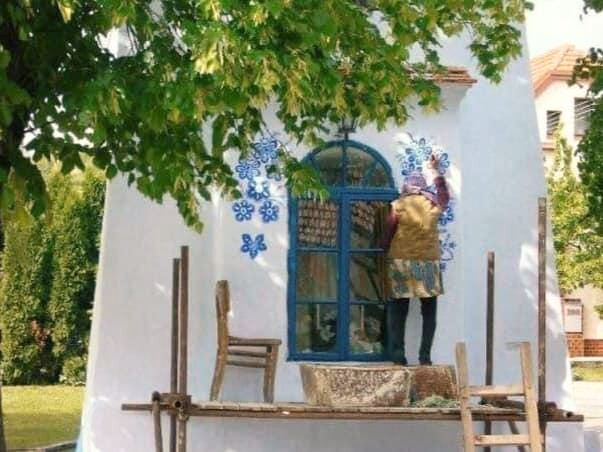
5.2. Inspiring the Next Generation
Agnes’s passion and perseverance have inspired a wave of young artists in Louka, who are eager to carry forward the tradition of mural painting. Several local youths, mentored by Agnes, are currently being trained by Agnes on the fineness of her techniques, thanks to value orientation toward culture. These young artists sketched on/for the community and they are entering it at a time when they repeated and in some ways further developed Louka’s legacy.
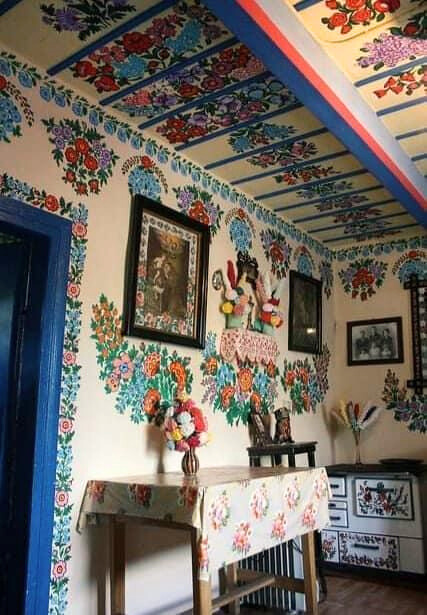
5.3. Preserving Art and Tradition
Looking ahead, the community has taken steps to ensure that both Kasparkova’s legacy and the local art tradition continue to thrive. Plans are in place to establish an annual painting workshop, inviting artists from across the region to learn and contribute to Louka’s walls. In addition, support through a local cultural fund has been provided to protect and renovate older Murals so that the art remains beautiful and a historical cultural asset. In this way, Louka wants to not only stay an embodiment of Moraviant culture, but a model of how community and culture can bring art into the world.
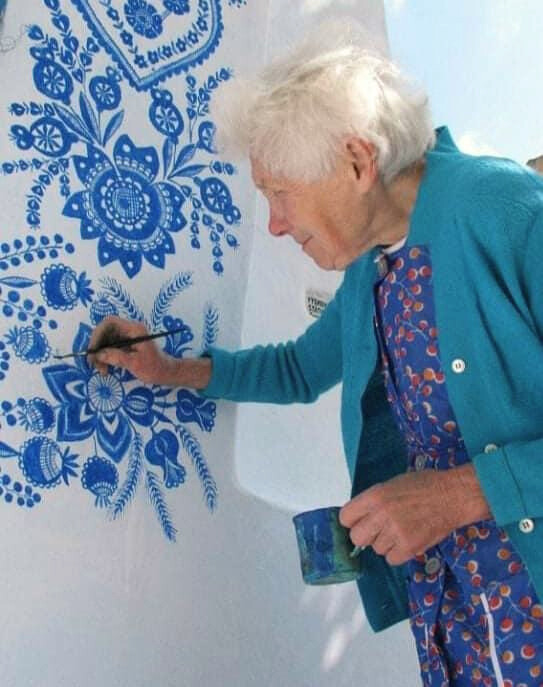
Conclusion
As what has been discussed, Agnes’ Kasparkova’s art process does not simply imply painting, it is something more, it is a piece of Moravian culture. As the words reveal, Agnes, an unassuming woman with extraordinary talent, has not only painted the exteriors of buildings in the village of Louka but has also ensured permanence in the form of confidently and energetically executed history. That such a shining blue-ultramarine is used by her to breathe life into the traditional motifs of Moravian has genuinely transformed Louka as a “Blue Bloom” or a fruition that adds meaning and value.
The uniqueness of her work lies not just in its beauty or the skill required, but in its ability to inspire unity and pride within a community. These murals have made Louka to be more of an art gallery where artistic and historical interests merge into one as agnes entertain the public through vibrant receptions of local cultures.
As we reflect on Agnes Kasparkova’s legacy, it becomes clear that her impact will be felt for many years to come. Her brush has painted not just the walls but also the life of cultural endurance and love for art and creativity that will bring hope to the next generations. In the blue hues of Louka’s walls lies a testament to one woman’s devotion to her culture and community, a legacy as enduring as the murals she leaves behind.
Also you can read an article about Nature’s Palette: Exploring the Vibrant World of the Rainbow Eucalyptus and more amazing articles in our website Bamboospanda.









